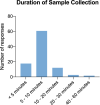Implementing the Lolli-Method and pooled RT-qPCR testing for SARS-CoV-2 surveillance in schools: a pilot project
- PMID: 35759174
- PMCID: PMC9243733
- DOI: 10.1007/s15010-022-01865-0
Implementing the Lolli-Method and pooled RT-qPCR testing for SARS-CoV-2 surveillance in schools: a pilot project
Abstract
Purpose: School closures have been used as part of lockdown strategies to contain the spread of SARS-CoV-2, adversely affecting children's health and education. To ensure the accessibility of educational institutions without exposing society to the risk of increased transmissions, it is essential to establish SARS-CoV-2 testing strategies that are child-friendly, scalable and implementable in a daily school routine. Self-sampling using non-invasive saliva swabs combined with pooled RT-qPCR testing (Lolli-Method) has been proven to be a sensitive method for the detection of SARS-CoV-2.
Methods: We conducted a pilot project in Cologne, Germany, designed to determine the feasibility of a large-scale rollout of the Lolli-Method for testing without any additional on-site medical staff in schools. Over a period of three weeks, students from 22 schools were sampled using the Lolli-Method. At the end of the project, teachers were asked to evaluate the overall acceptance of the project.
Results: We analyzed a total of 757 pooled RT-qPCRs obtained from 8,287 individual swabs and detected 7 SARS-CoV-2 infected individuals. The Lolli-Method was shown to be a feasible and accepted testing strategy whose application is only slightly disruptive to the daily school routine.
Conclusion: Our observations suggest that the Lolli-Method in combination with pooled RT-qPCR can be implemented for SARS-CoV-2 surveillance in daily school routine, applicable on a large scale.
Keywords: COVID-19; Lolli-Method; Pooled testing; RT-qPCR; SARS-CoV-2; School.
© 2022. The Author(s).
Conflict of interest statement
All authors declare no competing interests. FD, FK and RK hold EU-wide trademark protection for the terms “Lolli-Test” (018503959) and “Lolli-Methode” (018503958).
Figures



References
MeSH terms
LinkOut - more resources
Full Text Sources
Medical
Miscellaneous

